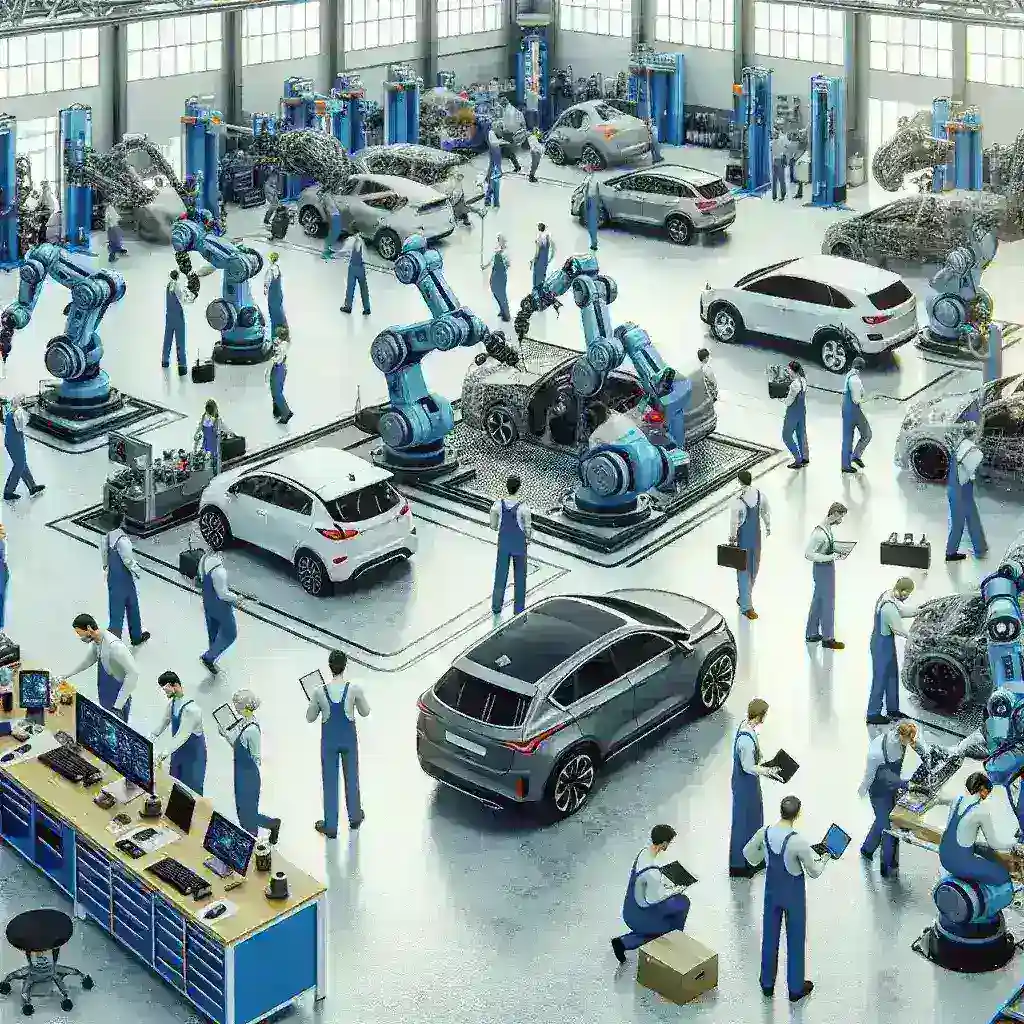Introduction
Tesla continues to push the boundaries of innovation, and their latest endeavor in the realm of vehicle maintenance is no exception. The electric vehicle (EV) manufacturer is piloting an AI-powered collision repair diagnostic system in its U.S. service centers, aiming to streamline the repair process while enhancing the accuracy of diagnostics. This groundbreaking technology not only promises to reduce repair times but also aims to improve overall customer satisfaction.
The Need for Advanced Diagnostics
As vehicle technology evolves, so does the complexity of automotive repairs. Modern cars are equipped with various sensors, cameras, and electronic components that require precise diagnostics. Traditional repair methods often involve labor-intensive processes that can lead to increased downtime and costs. Recognizing this challenge, Tesla is harnessing the power of artificial intelligence to create a more efficient repair system.
The Role of AI in Collision Repair
AI technology allows Tesla to analyze data from vehicles involved in accidents more effectively. By utilizing machine learning algorithms, the system can identify damage patterns and recommend specific repair procedures based on historical data. This approach aims not only to expedite the diagnostics but also to ensure repairs are performed accurately, mitigating the risk of future issues.
Historical Context
The introduction of AI in collision repair diagnostics marks a significant shift in how automotive repairs are conducted. Historically, repair shops have relied on experience and manual inspections to assess damage. However, as vehicles become more intricate, the need for advanced tools has become apparent. Tesla’s foray into AI diagnostics aligns with a broader industry trend towards automation and data-driven decision-making.
How Tesla’s AI Diagnostics Work
The AI-powered diagnostic system at Tesla service centers utilizes a combination of computer vision and robust data analytics. When a vehicle arrives at the service center, the system scans the car’s exterior and interior components, identifying any visible damage. It then cross-references this data with a vast database of repair histories and outcomes.
Step-by-Step Process
- Vehicle Scan: The technician uses a specialized scanning device to assess the vehicle for damage.
- Data Analysis: The AI system analyzes the scan results against its database to identify potential issues.
- Repair Recommendations: Based on the analysis, the system generates a list of recommended repairs.
- Parts Ordering: The system can automatically generate a parts list needed for repairs.
- Repair Execution: Technicians perform the repairs based on the provided recommendations.
- Quality Control: Post-repair, the system ensures all recommended repairs have been completed satisfactorily.
Benefits of AI-Powered Diagnostics
The implementation of AI in collision repair diagnostics offers several advantages:
- Increased Efficiency: Automation speeds up the diagnostic process, allowing for quicker turnaround times.
- Improved Accuracy: Machine learning reduces human error in damage assessment, leading to more precise repairs.
- Data-Driven Decisions: The system learns from past repairs, continually improving its diagnostic capabilities.
- Enhanced Customer Satisfaction: Quicker repairs and accurate diagnostics lead to higher customer satisfaction rates.
Challenges and Considerations
While the benefits are clear, there are also challenges associated with implementing AI diagnostics in collision repair. Some of these include:
- Initial Costs: The investment in AI technology and training can be significant for service centers.
- Data Privacy: Concerns around the handling of customer data must be addressed.
- Technician Training: Technicians must be educated on how to use the new systems effectively.
The Future of AI in Collision Repair
Looking ahead, Tesla’s AI-powered collision repair diagnostics could pave the way for even greater advancements in vehicle repair technology. As AI continues to evolve, we can expect to see more sophisticated systems capable of diagnosing and recommending repairs even before vehicles arrive at service centers. This proactive approach not only saves time but also enhances vehicle safety.
Predictions for the Market
Industry experts predict that more manufacturers will adopt similar technologies, leading to a standardization of AI diagnostics across the automotive sector. This shift could radically change the landscape of collision repair, making it more efficient and data-driven.
Conclusion
Tesla’s innovation in piloting AI-powered collision repair diagnostics in U.S. service centers showcases the company’s commitment to enhancing the customer experience and streamlining vehicle maintenance. By leveraging advanced technology, Tesla is not only setting a new standard within the automotive industry but also transforming how we approach vehicle repairs. As we embrace these technological advancements, it becomes clear that the future of automotive service is bright, promising improved accuracy, efficiency, and customer satisfaction.


Leave a Reply